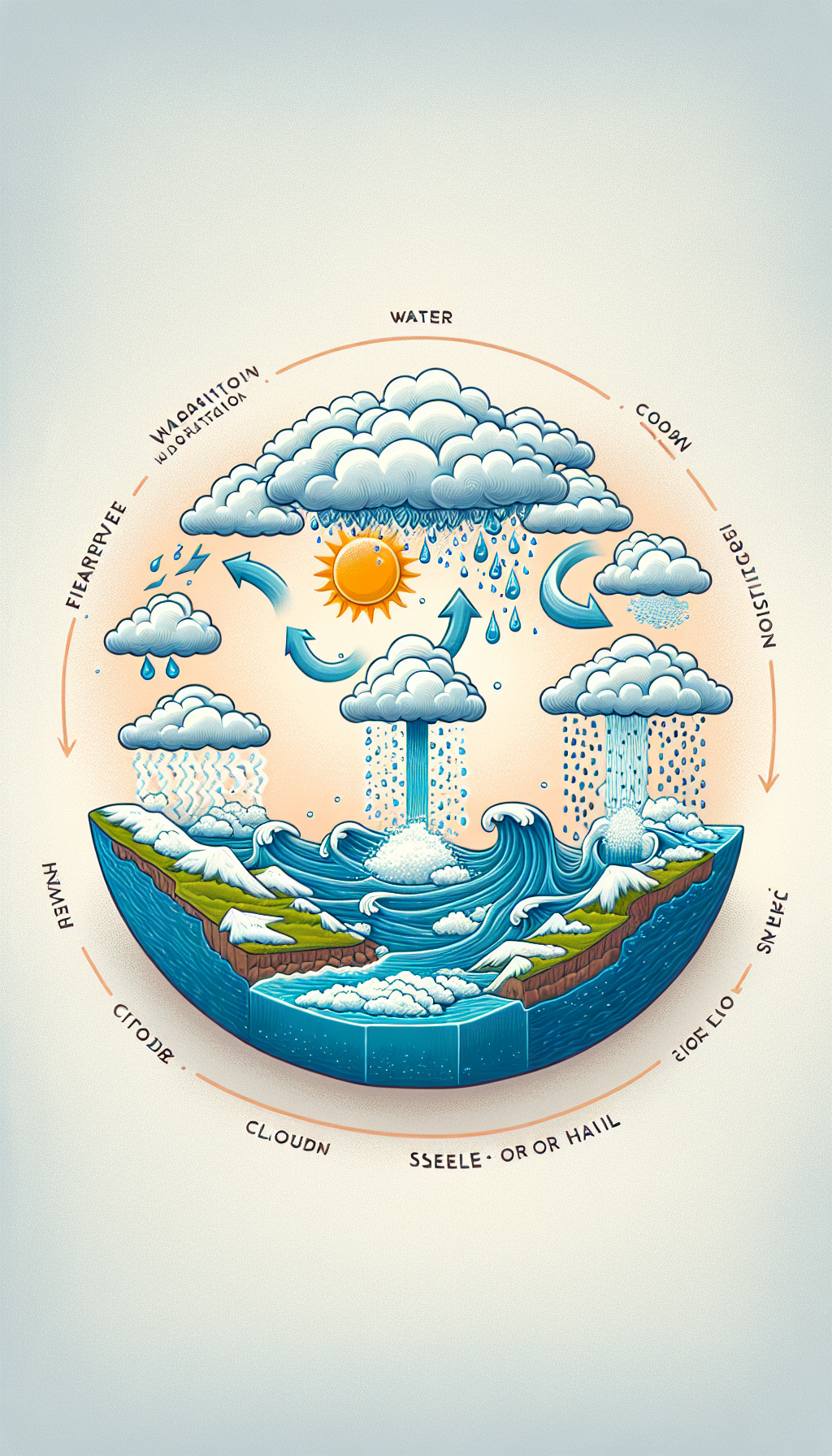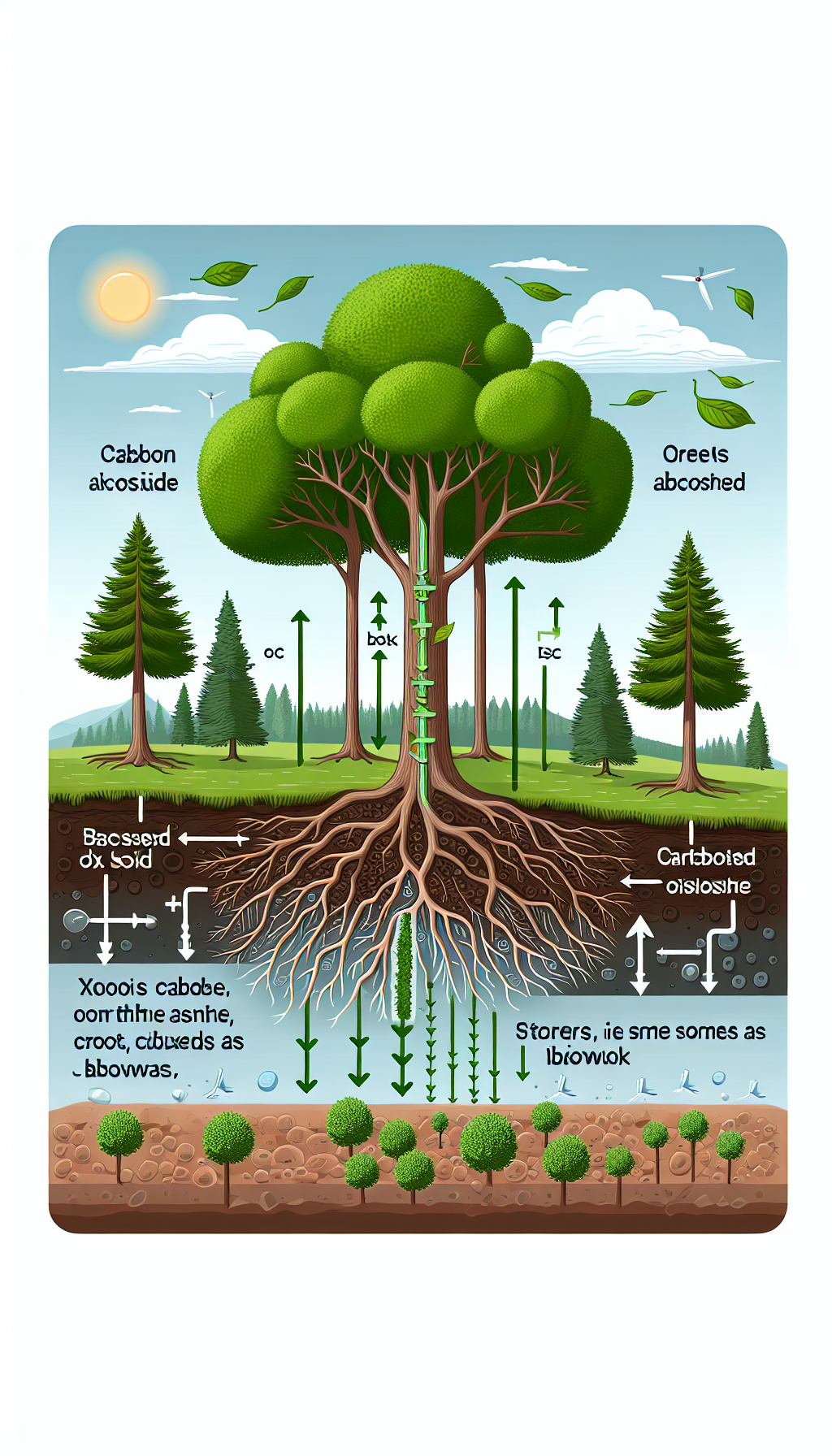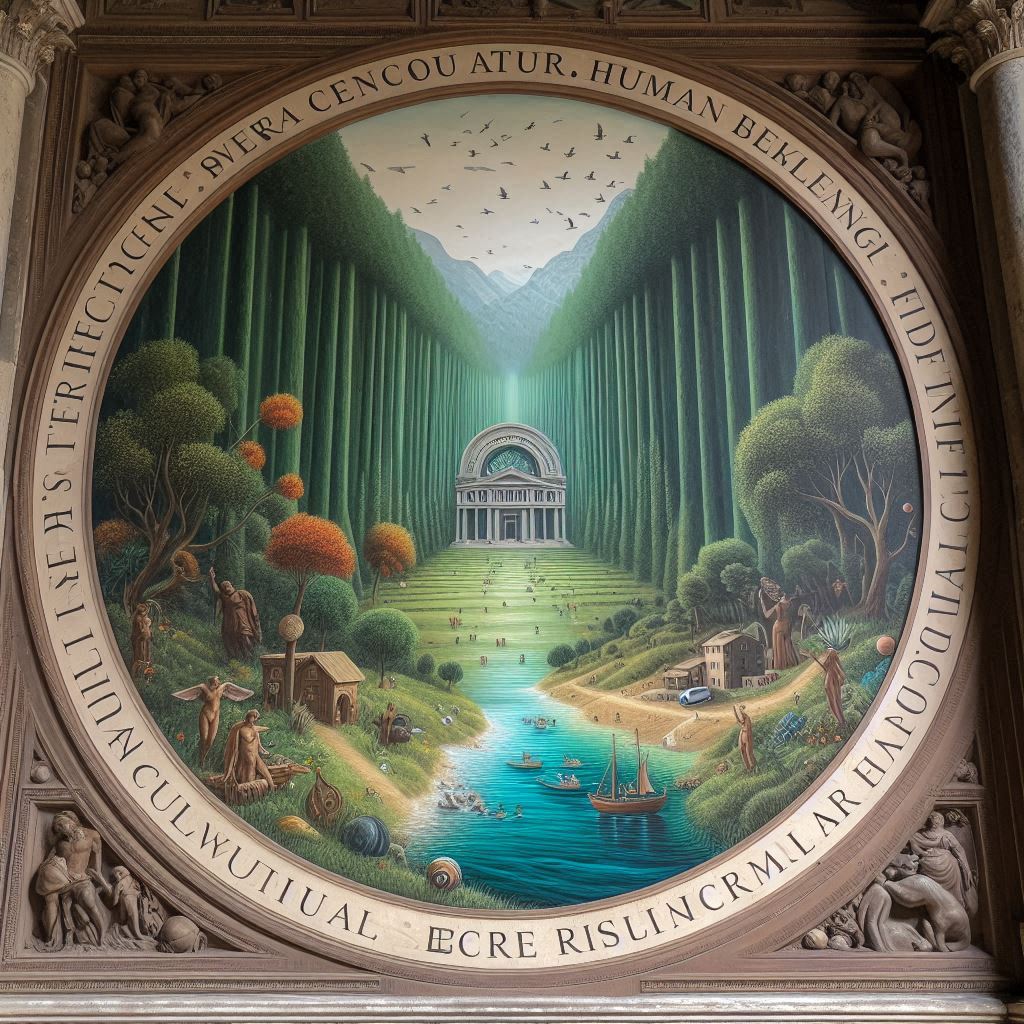Ecosystem services provide vital benefits to humans from natural systems. These services are grouped into four primary categories:
- Support Services: encompass essential processes such as soil formation, photosynthesis, and nutrient cycling that sustain life on Earth.
- Supply Services: include the tangible products we obtain from ecosystems, such as food, water, wood, fibers, and genetic resources.
- Regulation Services: include climate regulation, air and water purification, flood control, and disease regulation.
- Cultural Services: These are the intangible benefits that people gain from ecosystems through inspiration, recreation, education, and cultural heritage.
Thriving, well-maintained ecosystems are crucial for human well-being and environmental sustainability, offering vital resources and regulating natural processes. Therefore, conserving and restoring ecosystems are key to sustaining and enhancing these invaluable services.
The Water Cycle

The Water Cycle is essential for sustaining terrestrial ecosystems and life on Earth. This natural process includes evaporation, condensation, and precipitation, facilitating the continuous movement of water among the atmosphere, oceans, and land. Water vapor rises from oceans and land through evaporation, creating clouds. Once these clouds reach saturation, water descends back to the surface as rain, snow, or hail.
The water cycle delivers vital fresh water to humans, animals, and plants while also stabilizing temperatures and weather patterns. However, human activities like deforestation and urbanization can disrupt this balance, leading to environmental harm. Encouraging sustainable practices is crucial for maintaining the cycle and safeguarding future water resources.
Protection and Conservation of Biodiversity
Safeguarding and preserving biodiversity is crucial for sustaining ecosystem balance. Biodiversity includes all life forms on Earth and plays a vital role in the planet’s well-being. It ensures ecosystem resilience, enabling adaptation to changes while continuing to deliver essential services such as water purification, climate regulation, and soil fertility. Animal and plant species, along with their habitats, create a complex network that supports life in all its diversity.
The loss of biodiversity stands as a pressing environmental concern. Human actions, including deforestation, pollution, and climate change, pose significant threats to the diversity of life. It is essential to implement strategies to safeguard species and their habitats. This involves establishing reserves, enforcing laws against the trade of endangered species, and initiating ecosystem restoration projects. Only through collective dedication and decisive measures can we aspire to protect biodiversity for future generations.

Beautiful landscapes

Forests possess a captivating and remarkable beauty. These natural landscapes evolve with the seasons, offering a dynamic display of colors and forms. In spring, forests burst to life with vivid greens and blossoming flowers. Summer sees them lush and verdant, with trees offering cool shade and the air alive with birdsong. Autumn transforms the forests into a tapestry of yellow and red hues. Winter blankets them in shimmering snow, turning them into enchanting wonderlands. Forests provide a peaceful escape from everyday life and serve as a haven for wildlife.
Supply of products and raw materials
Acquiring products and raw materials from forest resources is essential for many industries. This involves sustainably gathering and utilizing materials like wood, resin, paper, and other derivatives. Forests supply crucial resources for manufacturing consumer goods and construction materials. Responsible management practices are key to sustainable extraction, reducing environmental impact. Additionally, reforestation and conservation policies are vital for maintaining forest ecosystem balance and fostering biodiversity.

Soil stabilization and erosion management

Soil stabilization and erosion control play vital roles in environmental sustainability and land preservation. Stabilization utilizes methods to bolster soil strength, preventing collapses. By incorporating geotextiles and binders, soil properties are enhanced, boosting load-bearing capacity and minimizing landslides.
Preventing erosion is crucial for maintaining soil health and safeguarding topsoil from wind and rain damage. Erosion poses a threat to the environment, endangering biodiversity and agriculture. Strategies like tree planting, establishing vegetative barriers, and constructing dry stone walls are employed to preserve soil and encourage regeneration.
Reducing the Impact of Severe Weather Events
Forests are vital in mitigating extreme weather events, serving as natural barriers against intense meteorological occurrences. Tree canopies slow down wind speeds and lessen the impact of rainfall, thereby preventing erosion and landslides. They soak up substantial amounts of rainwater, which reduces flood risks. By storing carbon, forests help regulate the climate, alleviating climate change and stabilizing atmospheric conditions. These advantages underscore the necessity of conserving and sustainably managing forests to safeguard both the environment and communities.

Foundation for research and studies, especially in the biological and pharmaceutical sectors

Forests are intricate ecosystems teeming with biodiversity, vital for maintaining the planet’s environmental equilibrium. They are home to countless plant and animal species, many of which are found nowhere else. These ecosystems offer essential resources like timber, natural medicines, and food. Because of these attributes, forests serve as an ideal location for pioneering research in biology and pharmaceuticals, drawing researchers and scientists from around the globe.
Carbon capture to fight climate change
Carbon capture is vital for addressing climate change, with forests having a significant impact. Trees absorb carbon dioxide through photosynthesis, storing carbon in their trunks, branches, and roots. This process decreases greenhouse gases and helps mitigate global warming. As natural carbon reservoirs, forests are essential for maintaining environmental balance.
Protecting and restoring forests are crucial for boosting carbon sequestration. Preserving existing forests and planting new trees enhance carbon absorption. Sustainable forest management is essential to prevent deforestation, which would release stored carbon and worsen climate change. Therefore, forests are vital for capturing carbon and ensuring a sustainable environment for the future.

Services for Human Well-being: Cultural, Spiritual, Recreational, and Educational

Forests offer a multitude of benefits that extend far beyond providing natural resources. They enrich our lives through cultural, spiritual, recreational, and educational services. Forests inspire cultural creativity and foster a sense of community belonging. They provide serene spaces for spiritual reflection, allowing people to connect with themselves and the natural world. Moreover, forests are perfect for recreational pursuits such as hiking, walking, and outdoor sports, encouraging a healthy and active lifestyle. They also serve as invaluable educational resources, providing natural settings for learning and cultivating environmental awareness.



